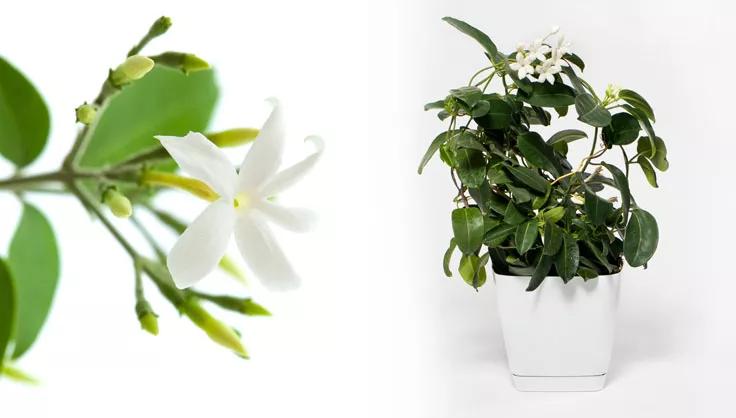How to Care for a Jasmine Plant

Choosing Your Jasmine Plant
For beginners, the Jasminum officinale is a great choice due to its hardiness and ease of care. The Jasminum sambac, with its sweetly scented flowers, is perfect for those who enjoy fragrant gardens.
How to Care for Jasmine Plants
Light
Jasmine Plants love bright, indirect sunlight. They can tolerate some direct sunlight, especially in the morning, but need protection from the harsh afternoon sun. A spot near a south-facing window with some light filtering is ideal.
Soil
A well-draining, rich potting mix works best. You can add perlite or sand to regular potting soil to improve drainage. Jasmine Plants prefer slightly acidic to neutral soil pH.
Fertilizer
Feed your Jasmine Plant with a balanced, water-soluble fertilizer every few weeks during the growing season (spring and summer). Reduce feeding in the fall and winter when growth slows.
Watering
Water when the top inch of the soil feels dry. Jasmine Plants like consistent moisture but are prone to root rot if overwatered. Ensure good drainage in the pot.
Pruning
Pruning is essential for maintaining a desirable shape and encouraging flowering. After the blooming season, trim back the plant to promote new growth.
Repotting
Repot your Jasmine Plant every couple of years or when it becomes root-bound. Spring is the best time for repotting, allowing the plant to settle before the active growth period.
Propagation
Jasmine Plants can be propagated through stem cuttings. Take a cutting in spring or early summer, dip it in rooting hormone, and plant it in moist soil.
Common Problems with Jasmine Plants
Pests and Diseases
Common pests include aphids, spider mites, and whiteflies. Use insecticidal soap or neem oil for treatment. Diseases like powdery mildew and root rot can be a problem, often due to poor air circulation or overwatering.
Toxicity
Most Jasmine Plant species are safe and non-toxic to pets and humans. However, it's always good practice to keep houseplants out of reach of pets and children.
Jasmine Plant FAQs
Why are my Jasmine Plant’s leaves turning yellow?
Yellowing leaves can be due to overwatering, underwatering, or a lack of nutrients. Assess your watering schedule and consider a soil test for nutrient deficiencies.
How do I get my Jasmine Plant to bloom?
Ensure adequate light, proper feeding, and a cooler, rest period in the winter. Pruning after flowering also encourages new flower buds.
Can Jasmine Plants be grown indoors?
Absolutely! With sufficient light and care, Jasmine Plants can thrive indoors, filling your space with their delightful fragrance.
Caring for Jasmine Plants is a delightful journey, filled with sweet fragrances and beautiful blooms. Whether you're a seasoned gardener or just starting, these plants bring a special touch of nature to any space.
Print this Article:
Get the Dirt
Stay up to date on new articles and advice. Please fill out the information below.
